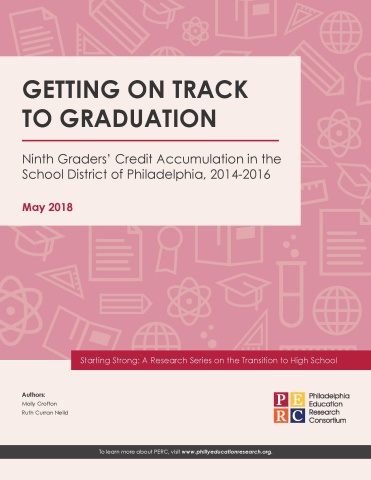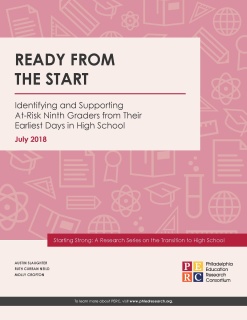
Ninth grade is a critical juncture for students. Students who make a good transition to high school are likely to graduate within four years. Those who do not—who fail to earn as many credits as they should in ninth grade—face an elevated risk of dropping out of high school. This report is part of the Philadelphia Education Research Consortium's series "Starting Strong: A Research Series on the Transition to High School."
To understand how well they are supporting ninth graders, more school districts are defining what students must have accomplished at the end of the first year of high school to be considered on track to graduation. Because there is a close association between being on track in ninth grade and graduation, the ninth grade on-track rate is like a “sneak peek” into a student cohort’s eventual graduation rate. The ninth grade on-track rate can be used for district and school improvement by identifying groups of schools or students who need additional support or highlighting successful efforts and progress over time.
In 2018, the School District of Philadelphia (SDP) established a new Ninth Grade On-Track Definition. To be considered on track to graduation, a student completing the first year of high school must have earned at least one credit in each core subject (English, mathematics, science, and social studies), plus one additional credit from any subject. Annually, the District expects to report the percentage of students on track to graduation at the end of ninth grade.
In this report, Philadelphia Education Research Consortium applies the 2018 Ninth Grade On-Track Definition to students who were first-time ninth graders in the SDP during the 2014-15 or 2015-16 school years. The authors examine how many students were on track to graduation, the characteristics of on-track and off-track students, and how on-track rates differ across high schools. Although the On-Track Definition was not in place at the time these students were in ninth grade, the analysis provides a benchmark against which progress can be measured and identifies characteristics of students and schools that might need additional support to start strong when they enter high school.



